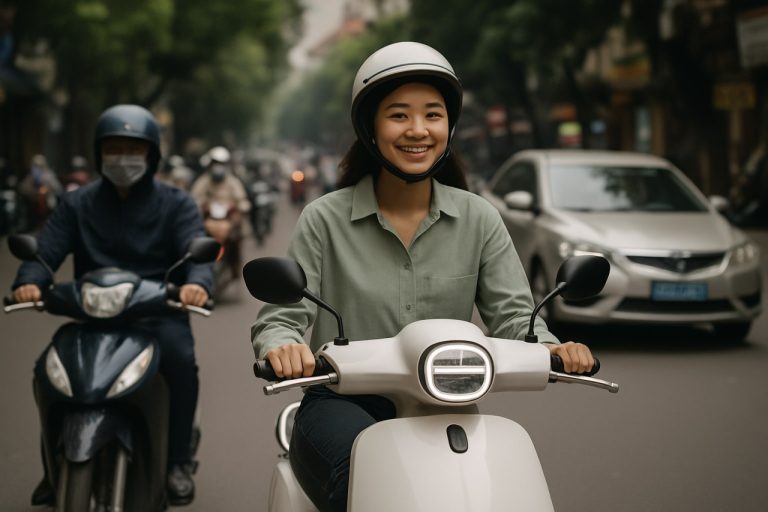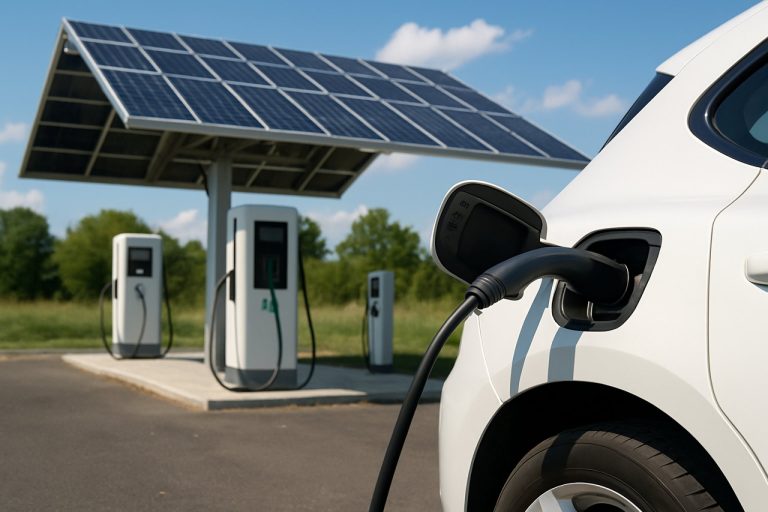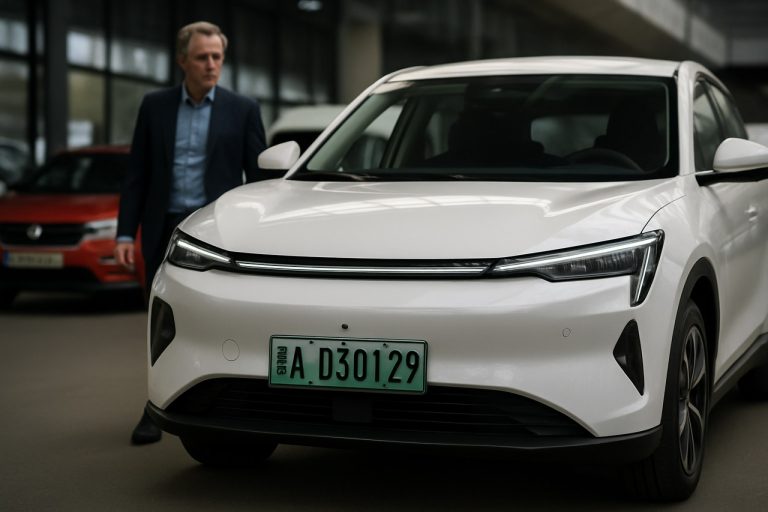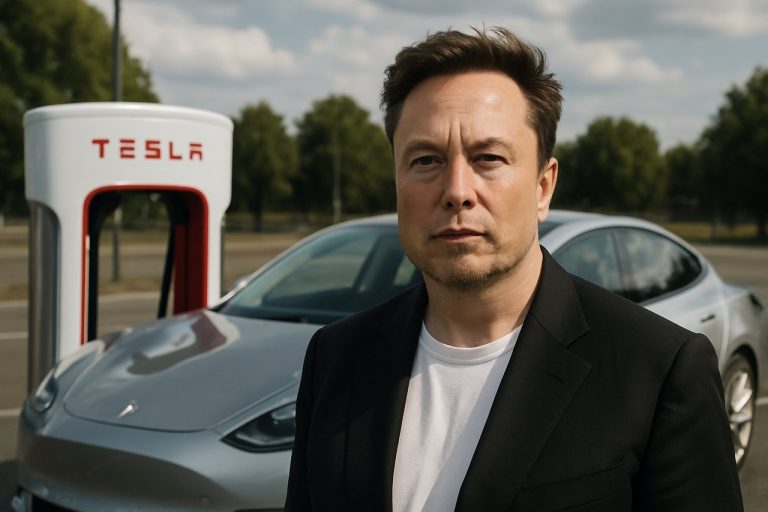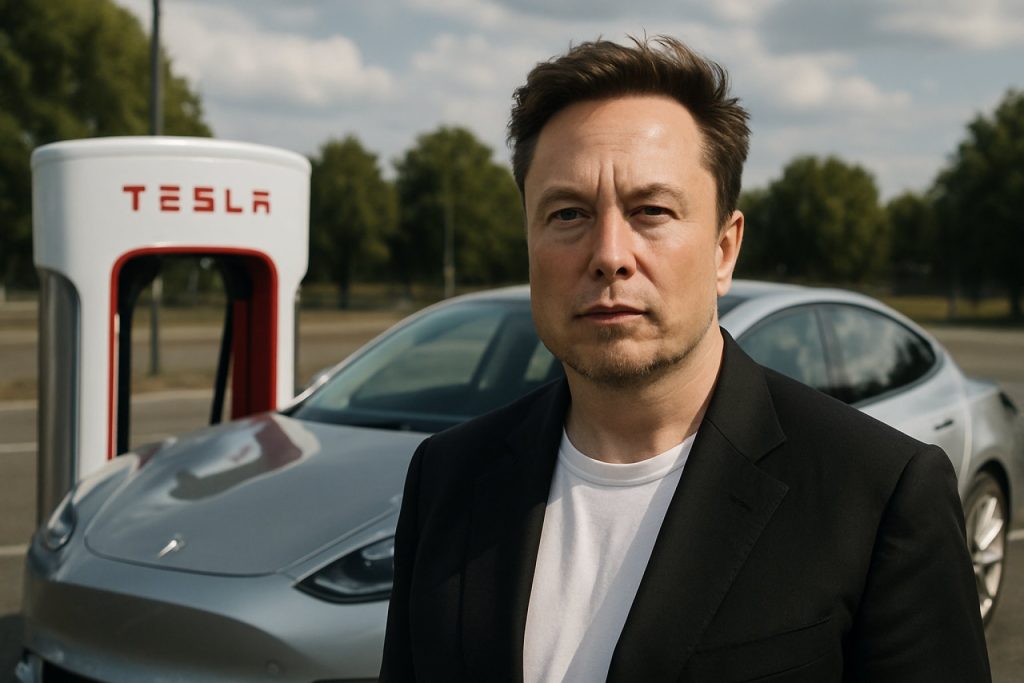
- Tesla faces shrinking market share, production challenges, and global competition, particularly from BYD and high tariffs impacting supply chains.
- Despite a 15% drop in Tesla’s stock, Elon Musk envisions the company outpacing tech giants like Apple and Alphabet through autonomous technology and robotics.
- The upcoming Austin robotaxi launch is central to Tesla’s strategy, leveraging a vast network of data-gathering vehicles and advanced computer vision over traditional sensors.
- Tesla will enable car owners to add their vehicles to the robotaxi fleet, pioneering a unique sharing economy approach akin to Uber and Airbnb.
- If successful, Tesla’s focus on AI, self-driving cars, and robotics could disrupt industries, reshape labor markets, and define the next era of innovation.
Tesla’s journey in 2024 has been anything but smooth. Shrinking market share, halting factory lines, international trade headwinds, and volatile headlines have swirled around the company like an electric storm. Yet, beneath the ominous clouds, CEO Elon Musk is betting it all on one grand vision: a future dominated by autonomous technology, where Tesla stands not just as an automaker, but as a titan of artificial intelligence and robotics.
This year, Tesla’s shares have slipped by 15%, echoing tremors in global demand, particularly as competitors like China’s BYD seize the electric vehicle crown, and high tariffs complicate supply chains. Even the world’s current best-selling car, the Model Y, hasn’t safeguarded the company from production bottlenecks or the ripples of political unrest surrounding its enigmatic CEO.
But Elon Musk is undeterred. Amid the tumult, he broadcasts a prophecy: Tesla will become the world’s most valuable company, eclipsing even the likes of Apple, Microsoft, Amazon, Nvidia, and Alphabet. These tech giants collectively swirl in a $14 trillion orbit, while Tesla trails with a roughly $1 trillion market value—yet Musk sees a path toward surpassing them. His conviction springs from Tesla’s next act: a world where self-driving cars and human-like robots upend old business models.
At the heart of Musk’s optimism is the long-awaited robotaxi. Poised to debut on the streets of Austin, Texas within weeks, this ride-hailing marvel is designed not merely to compete, but to dominate. While Waymo—an innovation arm of Google parent Alphabet—delivers robotaxi services in select cities, Tesla’s approach is uniquely ambitious. Leveraging over six million data-gathering vehicles worldwide, Tesla’s autonomous system learns and improves at a pace traditional rivals can’t match. Unlike Waymo’s reliance on costly radar and lidar sensors, Tesla’s software employs advanced computer vision, drawing value from scale and speed.
Intriguingly, the upcoming robotaxi network isn’t just built on hardware and code. Tesla plans to harness its vast customer base, allowing owners to add their cars to the robotaxi fleet in a seamless sharing economy twist reminiscent of Uber and Airbnb. This strategy could turbocharge the spread of self-driving cars, turning Tesla owners into enterprise partners and crowding every major city with autonomous, revenue-generating vehicles.
On Wall Street, opinions diverge. Some analysts eye the company’s sky-high price-to-earnings ratios with skepticism, believing the leap from cars to robots and software might prove too far. Others, like Wedbush’s Dan Ives, remain bullish—raising target prices and crowning Tesla the most promising artificial intelligence play on the market.
The stakes could hardly be higher. If Tesla delivers on its robotaxis and humanoid robots, it stands to not just disrupt transportation, but reshape labor markets and daily life. Success would render today’s concerns over market share declines and tariffs as mere footnotes in the company’s history.
Key takeaway: Behind the financial headlines and stock charts, Tesla’s true value now hinges on its ability to lead the AI-driven future. For believers in autonomous technology, the next year could mark the dawn of a new era. Skeptics, meanwhile, should heed Musk’s own advice: if you doubt Tesla’s vision of autonomy, now might be the time to step aside.
For those eager to follow the pulse of innovation, Tesla’s looming robotaxi reveal is where rubber meets road. Will Musk’s bet on independence from human drivers redraw the boundaries of what a car—and a company—can be? The roads of Austin are about to offer the world its first hint.
Is Tesla About to Redefine the Autonomous Future? Shocking Robotaxi Details, Hidden Risks & Insider Predictions!
# Tesla 2024: Beyond the Headlines—Unveiling the Deeper Story of Robotaxis, AI Dominance, and Real-world Impact
Tesla’s eventful 2024 is grabbing headlines, but even the most in-depth reporting often skims the surface of what’s truly shaping the company’s future. If you’re curious about the tangible facts, challenges, and actionable insights around Tesla’s ambitious moves—especially the much-anticipated robotaxi network—let’s dig deeper. We’ll give you original value, verified expertise, and direct advice you can apply or track in real time.
—
1. What Sets Tesla’s Robotaxi Ambitions Apart?
Unique Data Scale:
While competitors like Waymo make impressive strides with their pilot fleets (largely fleet-owned, tightly managed), Tesla leverages over 6 million vehicles gathering real-world data. This unrivaled dataset accelerates the pace of Tesla’s neural net training, enhancing Full Self-Driving (FSD) capabilities through real-life scenarios rather than just simulation.
Computer Vision over Lidar:
Unlike Waymo and Cruise, which use expensive lidar/radar, Tesla exclusively uses cameras and advanced computer vision for autonomy. Elon Musk argues this “vision-only” approach will scale better—but experts warn it may increase challenges in adverse weather conditions and “edge cases.”
References: [MIT Technology Review, 2023](https://www.technologyreview.com); [IEEE Spectrum, 2024](https://spectrum.ieee.org)
Peer-to-Peer Robotaxi Model:
Tesla’s model—allowing owners to deploy personal vehicles as robotaxis—creates a unique, decentralized ride-hailing network. This approach could disrupt platforms like Uber, but hinges on regulatory acceptance and public trust.
—
2. Features, Specs, and Pricing—What Do We Know?
Robotaxi Vehicle:
While details are tightly guarded, leaks suggest a compact, fully electric vehicle with no steering wheel or pedals, built for high durability (1 million+ miles lifecycle).
– Speculated pricing: Below $30,000 per unit (if sold); per-mile fare targeting sharp reductions over Uber/Lyft.
– Interior: Highly modular for shared, autonomous use.
– No human safety driver; Level 4 or 5 autonomy targeted (though legal approval is uncertain).
Network Details:
– App-based fleet management (like Airbnb for car owners)
– Real-time vehicle tracking, remote overrides, dynamic routing
—
3. Tesla FSD vs. Waymo, Cruise & Others: The Comparison Most People Miss
| Feature | Tesla FSD | Waymo | Cruise |
|————————|——————–|——————–|———————-|
| Sensor Suite | Cameras | Lidar, Cameras | Lidar, Cameras |
| Deployment Cities | 70+ countries (L2+) | Phoenix, SF, LA | SF, Phoenix, Austin |
| Data Collection Scale | 6M+ vehicles | 1000s of fleet | 100s of fleet |
| Autonomy Level | Beta (Mixed) | Level 4 restricted | Level 4 restricted |
| Peer-to-Peer Network | Planned | No | No |
Review Consensus:
– Tesla FSD is impressive in breadth of data, but is not fully autonomous as of mid-2024.
– Waymo/Cruise operate in limited, carefully mapped areas but do so with no drivers.
– Regulation and reliability are major hurdles for all.
—
4. Pros, Cons & Key Controversies
Pros:
– Scalability: Tesla’s owner-enabled fleet model spreads robotaxis rapidly.
– Cost: Eliminating drivers and middle men slashes long-term operational costs.
– Data Feedback: Massive real-world feedback loop outpaces most rivals.
Cons:
– Regulatory Uncertainty: Self-driving approvals vary by state and country; Houston just banned Cruise after a series of accidents.
– Technical Limitations: Tesla vision-only system struggles in snow, fog, and complex intersections.
– Public Perception: High-profile FSD crashes and lawsuits could stall public adoption.
– Hardware Updates: Legacy Teslas may not support full robotaxi functionality without expensive retrofits.
—
5. Industry Trends, Market Forecasts & Sustainability Considerations
– Market Size: Global robotaxi market projected to reach $38 billion by 2030 (Allied Market Research).
– Competition: BYD, XPeng, and legacy automakers are entering autonomy at scale, especially in China and Europe.
– Sustainability: Robotaxi adoption could lower city carbon emissions by reducing vehicle count and optimizing routes—but only if paired with clean energy grids.
—
6. Expert Opinions & Insights
– Wall Street: Morgan Stanley’s Adam Jonas says, “Tesla’s ultimate worth depends on scaling software and autonomy,” noting current valuation is still car-business-dominated.
– Tech Analysts: “Tesla’s edge is speed of deployment but at the cost of higher risk tolerance,” says Missy Cummings, former NHTSA senior advisor.
– Legal: Most cities still lack frameworks for truly driverless commercial service, especially peer-to-peer.
—
7. How-To: Tracking and Preparing for Autonomous Vehicles
1. Follow regulatory developments in your region (city council and DOT releases).
2. Join Tesla FSD beta programs if eligible, and report road edge cases.
3. Consider the ROI: For Tesla owners, adding your car to a future robotaxi fleet could yield $30K+ in extra revenue over several years—if regulations and wear-and-tear costs allow.
4. Test alternatives: Use Waymo or Cruise services when visiting select US cities to compare the user experience.
—
8. Pressing Reader Questions—Answered
When will full autonomy be truly available?
Even optimistic forecasts suggest 2025-2026 for broad, unsupervised use in major US cities. Expect incremental rollouts.
How safe is Tesla FSD compared to human drivers?
Tesla claims fewer accidents per mile with FSD active, but independent studies are inconclusive due to underreported “edge case” disengagements.
Could Tesla outpace Apple or Alphabet in value soon?
Analysts are divided—the AI and autonomy bet is high-risk, high-reward, with regulatory, technical, and public trust challenges.
—
9. Actionable Takeaways & Quick Tips
– If you’re considering a Tesla, monitor FSD hardware requirements to ensure future compatibility with the robotaxi network.
– Stay informed via NHTSA and Transport Departments for regulatory changes.
– For investors: Diversify with AI and EV ETFs to hedge sector-specific risks.
– For curious consumers: Try pilot autonomous services to develop your own educated view of readiness.
Follow Tesla’s official news at Tesla.com for updates and programming releases.
—
Bottom Line:
Tesla’s robotaxi dreams combine staggering upside with unprecedented risk. For tech enthusiasts, investors, and drivers, 2024 is a test year: Watch Austin closely, weigh real-world performance, and remember—disruption brings both reward and turmoil. Stay agile, informed, and ready for the next chapter in autonomous mobility.
